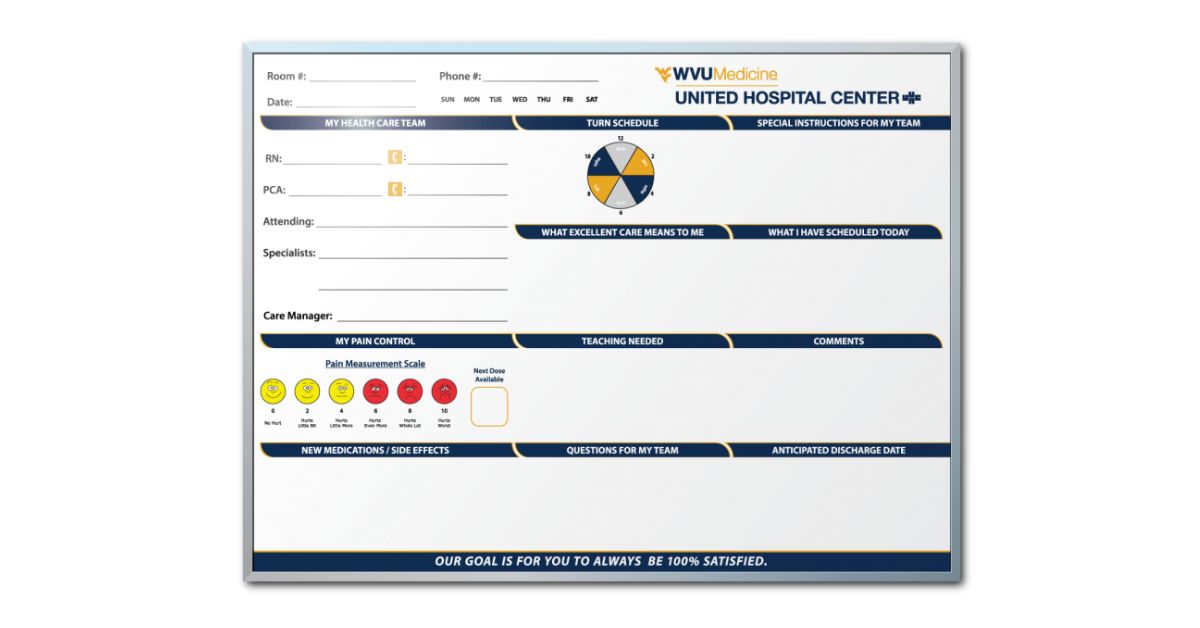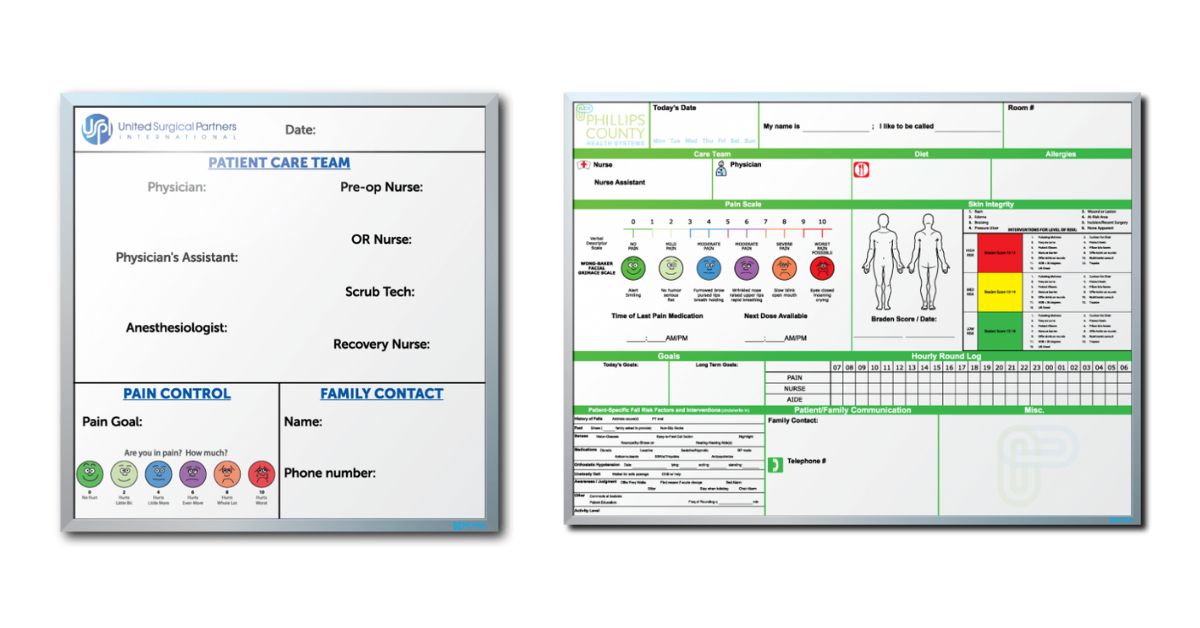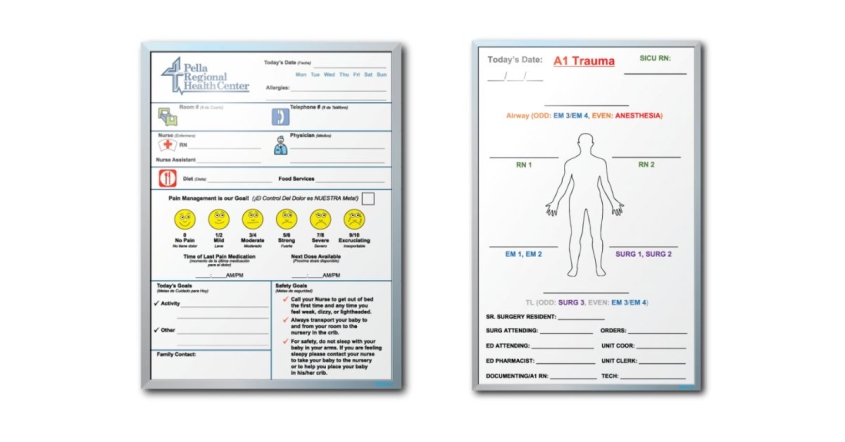How To Use Medical Whiteboards To Empower Patients
Clear communication and patient empowerment are vital in today’s fast-paced medical environment. With the medical world’s increasing complexity, it can be challenging for patients to understand their treatment plans and stay informed about their health status. That’s where medical whiteboards come in. We’ll guide you on how to use medical whiteboards to empower patients and make healthcare more transparent, collaborative, and effective.
Introduction to Medical Whiteboards
Medical whiteboards are essential tools in hospitals and clinics. They are visual aids that enhance communication between healthcare providers, patients, and their families. These whiteboards can display crucial information such as patient names, treatment plans, schedules, and important reminders. By centralizing information, medical whiteboards keep everyone on the same page, reducing misunderstandings and errors.
Enhancing Communication With Medical Whiteboards
Effective communication is the backbone of successful patient care. Medical whiteboards bridge the gap between healthcare providers and patients by providing a clear and concise way to share information. When patients see their treatment plans and progress, they feel more involved in their care, leading to better outcomes.
Medical whiteboards allow healthcare providers to update information in real time, ensuring patients have the most current details about their care. This transparency fosters trust and encourages patients to ask questions and participate in their treatment.
Empowering Patients Through Transparency
Transparency is key to empowering patients. When patients have access to information about their health, they can make informed decisions and take an active role in their care. Medical whiteboards visually represent a patient’s status, treatments, and goals, making it easier for them to understand their medical situation.
By displaying information such as medication schedules, dietary restrictions, and daily goals, medical whiteboards help patients stay informed and engaged. This empowerment can lead to increased compliance with treatment plans and a greater sense of control over their health.

Improving Patient Engagement
Patient engagement is crucial for achieving positive health outcomes. Medical whiteboards play a significant role in keeping patients engaged by providing a platform for interactive communication. Patients can use the whiteboards to jot down questions for their doctors, track their progress, and even set personal health goals.
When patients take an active role in their care, they are more likely to adhere to treatment plans and follow medical advice. This involvement improves their health outcomes and enhances their overall hospital experience.
Supporting Caregivers and Families
Healthcare is about patients, their families, and caregivers. Medical whiteboards provide a central hub of information that everyone involved in a patient’s care can easily access. This accessibility ensures that caregivers and family members are well-informed and can effectively support the patient.
Families can use the whiteboards to keep track of visiting hours, doctor’s appointments, and other important events. This organized approach reduces stress and helps families feel more connected to the patient’s care plan.
Streamlining Hospital Operations
Hospitals are busy environments with many moving parts. Medical whiteboards streamline operations by providing a clear and organized way to manage information. Staff can quickly update patient statuses, assign tasks, and track progress, leading to more efficient workflows.
This organization reduces the likelihood of errors and ensures that all team members know their responsibilities. Medical whiteboards improve coordination and communication, contributing to a smoother and more effective hospital operation.
Enhancing Patient Safety
Patient safety is a top priority in healthcare. Medical whiteboards contribute to patient safety by providing a clear and visible way to track important information. This visibility prevents medication errors, missed treatments, and other common issues that can arise in a busy hospital setting.
By keeping all relevant information in one place, medical whiteboards reduce the risk of miscommunication and ensure everyone involved in a patient’s care is on the same page. This proactive approach to safety can significantly improve patient outcomes.
Customizing Medical Whiteboards for Specific Needs
Every patient is unique, and so are their medical needs. Professionals can customize medical whiteboards to meet the specific requirements of different patients and healthcare settings. Whether it’s a pediatric ward, a surgical unit, or a rehabilitation center, custom-printed whiteboards can display the most relevant information for the department’s goals.
Encouraging Patient Feedback
Patient feedback is essential for improving healthcare services. Medical whiteboards can include sections for patients to leave comments, questions, and suggestions. This feedback loop helps healthcare providers understand patient needs and adjust their care plans.
Encouraging patients to share their thoughts fosters collaboration and mutual respect. It also provides valuable insights that can lead to better patient experiences and outcomes.

Promoting a Culture of Transparency and Trust
A culture of transparency and trust is crucial for effective healthcare. Medical whiteboards play a key role in promoting this culture by providing a clear and open way to share information. When patients feel that their healthcare providers are honest and transparent, they are more likely to trust and engage in their care.
Trust and transparency lead to better patient-provider relationships, improved compliance with treatment plans, and, ultimately, better health outcomes. Medical whiteboards are simple yet powerful tools for fostering this positive culture.
Training Staff To Use Medical Whiteboards Effectively
It is important to train healthcare staff on how to use medical whiteboards effectively to maximize their benefits. Training should cover best practices for updating information, maintaining the whiteboards, and engaging with patients using this tool.
Effective training ensures that all staff members understand the importance of medical whiteboards and are ready to use them to their full potential. This consistency across the team leads to better communication and patient care.
Measuring the Impact of Medical Whiteboards
It is important to measure the true value of medical whiteboards’ impact on patient care and hospital operations to understand their true value. Metrics such as patient satisfaction, engagement levels, and error rates can provide valuable insights into their effectiveness.
Regularly evaluating these metrics allows hospitals to make data-driven decisions and continuously improve their use of medical whiteboards. This commitment to improvement ensures that patients receive the best possible care.
Conclusion
In conclusion, medical whiteboards enhance communication, transparency, and engagement, leading to better patient outcomes and more efficient hospital operations. Integrating medical whiteboards into patient care allows healthcare providers to create a more informed, involved, and empowered patient population. Now that you know how to use medical whiteboards to empower patients, you can improve your own healthcare facility’s approach to patient care.
For hospitals looking to implement this effective tool, we offer high-quality hospital patient room whiteboards designed to meet the specific needs of your healthcare setting. Start empowering your patients today with our expertly crafted whiteboards and experience the positive impact on your patient care and hospital efficiency.



